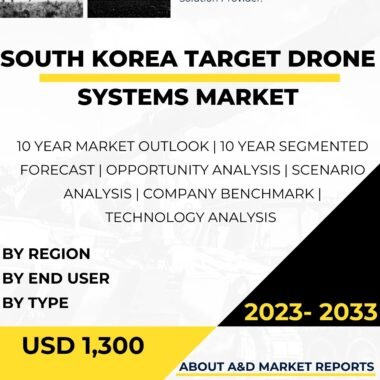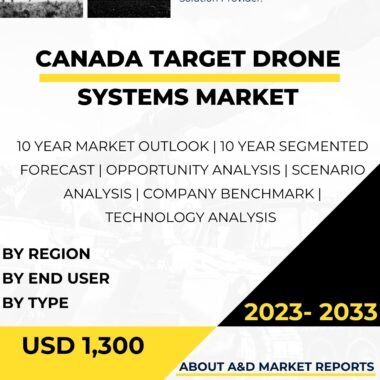Description
The target drone systems market in Japan has experienced significant growth and strategic importance as the nation seeks to enhance its military training and testing capabilities. Target drones, also known as unmanned target aircraft or aerial targets, are remotely controlled unmanned aerial vehicles (UAVs) designed to simulate enemy threats or targets during military exercises, weapon testing, and training scenarios. These drones play a crucial role in modernizing Japan’s defense and security forces, enabling them to conduct realistic and cost-effective training exercises and evaluate the performance of various weapon systems.
The target drone systems market in Japan encompasses a diverse range of target drones, including aerial, naval, and ground-based target systems. These drones are used by various branches of the Japan Self-Defense Forces (JSDF), defense contractors, and research institutions to simulate enemy aircraft, missiles, and naval vessels, providing a realistic and dynamic training environment for personnel and weapons systems.
One of the primary applications of target drone systems in Japan is in enhancing its military training and readiness. Target drones are used in various military training exercises, such as air-to-air combat training, surface-to-air missile training, and anti-ship missile training. By replicating enemy threats, these drones enable JSDF personnel to practice and refine their combat skills in a controlled and safe environment.
Moreover, target drones play a crucial role in evaluating the performance of weapon systems and defense equipment. During weapon testing, target drones are used as surrogate targets to assess the accuracy and effectiveness of missiles, guns, and other weapon systems. These tests provide valuable data and feedback to optimize the performance of Japan’s defense equipment.
Furthermore, target drones support Japan’s research and development efforts in the field of unmanned systems and drone technology. The development and operation of target drones offer valuable insights into drone technology, aerodynamics, and control systems, contributing to Japan’s unmanned systems capabilities and fostering innovation in the defense industry.
As Japan emphasizes indigenous defense capabilities, the domestic production and development of target drone systems have seen substantial growth. Collaborations between the government, defense industry, and research institutions have fostered innovation, leading to the creation of advanced target drones tailored to Japan’s specific defense requirements.
The target drone systems market in Japan also benefits from advancements in drone technology, autonomous control, and target simulation capabilities. Manufacturers have leveraged these developments to create target drones with improved flight performance, autonomy, and realistic threat simulation, making them more effective and adaptable for military training and testing purposes.
However, the target drone systems market in Japan also faces challenges related to cost, spectrum management, and airspace coordination. Target drones can be costly to procure and operate, requiring investment in research, development, and sustainment. Addressing cost challenges requires efficient resource allocation and cost-effective procurement strategies.
Moreover, managing electromagnetic spectrum allocation is crucial for ensuring that target drone systems do not interfere with other military communication and radar systems. Coordinating frequencies and managing spectrum usage are essential for maintaining reliable and safe drone operations.
Additionally, coordinating drone operations in crowded airspace is essential to ensure the safety of manned aircraft and other UAVs. Integrating target drone operations with air traffic management systems and airspace coordination procedures is crucial for conducting training exercises and tests in controlled and designated areas.
In conclusion, the target drone systems market in Japan has witnessed significant growth and strategic importance, driven by the nation’s focus on enhancing its military training and testing capabilities. Target drones provide critical solutions for realistic military training, weapon system evaluation, and research and development in drone technology, catering to Japan’s specific defense requirements. The collaboration between the government, defense industry, and research institutions, as well as international partnerships with allied nations, fosters innovation and contributes to the growth of the domestic target drone systems market. Addressing challenges related to cost, spectrum management, and airspace coordination is crucial for further enhancing Japan’s target drone capabilities and ensuring that its defense and security forces remain equipped with advanced and reliable target drone systems to effectively train personnel, evaluate weapon systems, and support research efforts. With its strategic focus on indigenous defense capabilities, Japan remains committed to leveraging advanced target drone technologies to enhance its military readiness, maintain realistic and dynamic training exercises, and contribute to regional and global security efforts.




